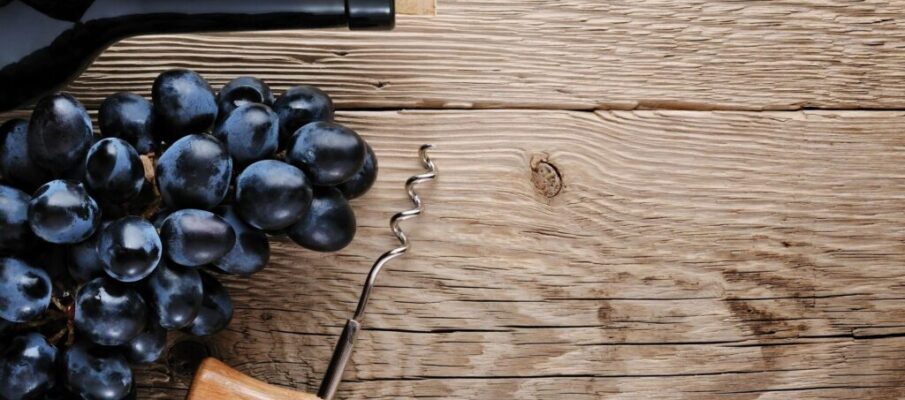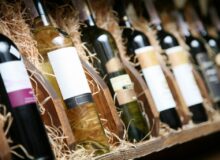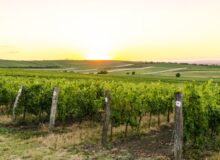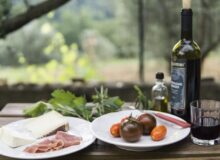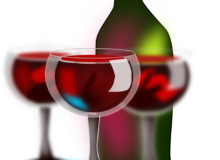Château Léoville-Poyferré is one of the best wines in the world. It is a winery in the Saint-Julien appellation of the Bordeaux region of France. It has an interesting history. It is about $80-$120 retail and is worth the effort to try. This is a real ‘Super Second” wine…meaning it should be part of the First Category of the best of the best. These wines will continue to develop in the bottle if kept in a cool dry place. They will age 10 -20 years…maybe more and they are excellent with rich foods. Usually automatic great wine scores.
OK, so let’s try to break up and untangle the history of this great Bordeaux wine…
As stated, Château Léoville-Poyferré is also the name of the red wine produced by this property. The wine produced here was classified as one of fifteen Deuxièmes Crus (Second Growths) in the original Bordeaux Wine Official Classification of 1855.
Here is where it gets interesting.
Léoville-Poyferré was once part of the much larger Léoville estate until the time of the French Revolution when it was separated into Château Léoville-Las Cases and Château Léoville-Barton.
In a nutshell, between 1700 and 1789, the French population increased from 18 million to 26 million, leading to large numbers of unemployed, accompanied by sharp increases in food prices caused by years of bad harvests. Widespread social distress led to the convocation of the Estates General in May 1789, the first since 1614. In June, the Estates were converted into a National Assembly, which passed a series of radical measures, among them the abolition of feudalism, state control of the Catholic Church and extending the right to vote.
In 1976, the 1971 vintage of Château Léoville-Las Cases ranked number six among the ten French and California red wines in the historic “Judgment of Paris” wine competition.
*Since the mid 20th century the Delon family have been owners of Château Léoville-Las Cases, and also owners of châteaux Potensac and Nénin; which are wines that are worthy of Classified Growth.
The next three years were dominated by the struggle for political control, exacerbated by economic depression and social unrest.
With that in mind…
Château Léoville Barton the other separate part is also vineyard in the Saint-Julien appellation of the Bordeaux region of France. Château Léoville Barton is also the name of the red wine produced by this property and the wine produced here was classified as one of fifteen Deuxièmes Crus (Second Growths) in the original Bordeaux Wine Official Classification of 1855. It’s great stuff.
Interestingly, unlike many of its peers, Château Léoville Barton has no château building; the wines are made at what is now Château Langoa-Barton(Third Growth) with which it shares ownership. Plus, the château depicted on Léoville Barton’s label is actually that of Château Langoa Barton. So, the French laws are getting very dicey here. But it does not detract from the quality of the wine, whatsoever.
So, Léoville Barton, along with Château Léoville-Las Cases and Château Léoville-Poyferré was once part of the vast Léoville estate.
The estate was purchased by Hugh Barton in 1826, and continues to be owned by the Barton family, of Irish descent. The current owner Anthony Barton began running the estate in 1983, along with its sister property Château Langoa Barton.
*Note –The two St. Julien properties have the longest continuous duration of ownership by the same family of any of the other current proprietors in Bordeaux.
Léoville-Las Cases was one of the first estates in Bordeaux to introduce a second label, Clos du Marquis. However, Clos du Marquis is a separate wine. Since 2007, the Chateau has offered a Second Wine known as Le Petit Lion de Marquis de Las Cases.
I am certain there are a lot more nuances to these legendary wines. But you get the idea.
Recap of the wines are…
Château Léoville-Poyferré
Château Léoville-Las Cases
Château Léoville-Barton
Château Langoa-Barton
Potensac
Nénin
Cheers! and I hope you enjoyed it… Seek out these wines. They are pricey but well worth it. Foodies Alert! Try them with meals like a big Rib Eye Steak with Creamed Spinach; Mushroom Risotto, Osso Bucco (pork, beef or lamb) and Braised Short Ribs. Open them up for about an our before you have them or Decant them. These are types of wine you do that for; excellent Wine and Food Pairings.

